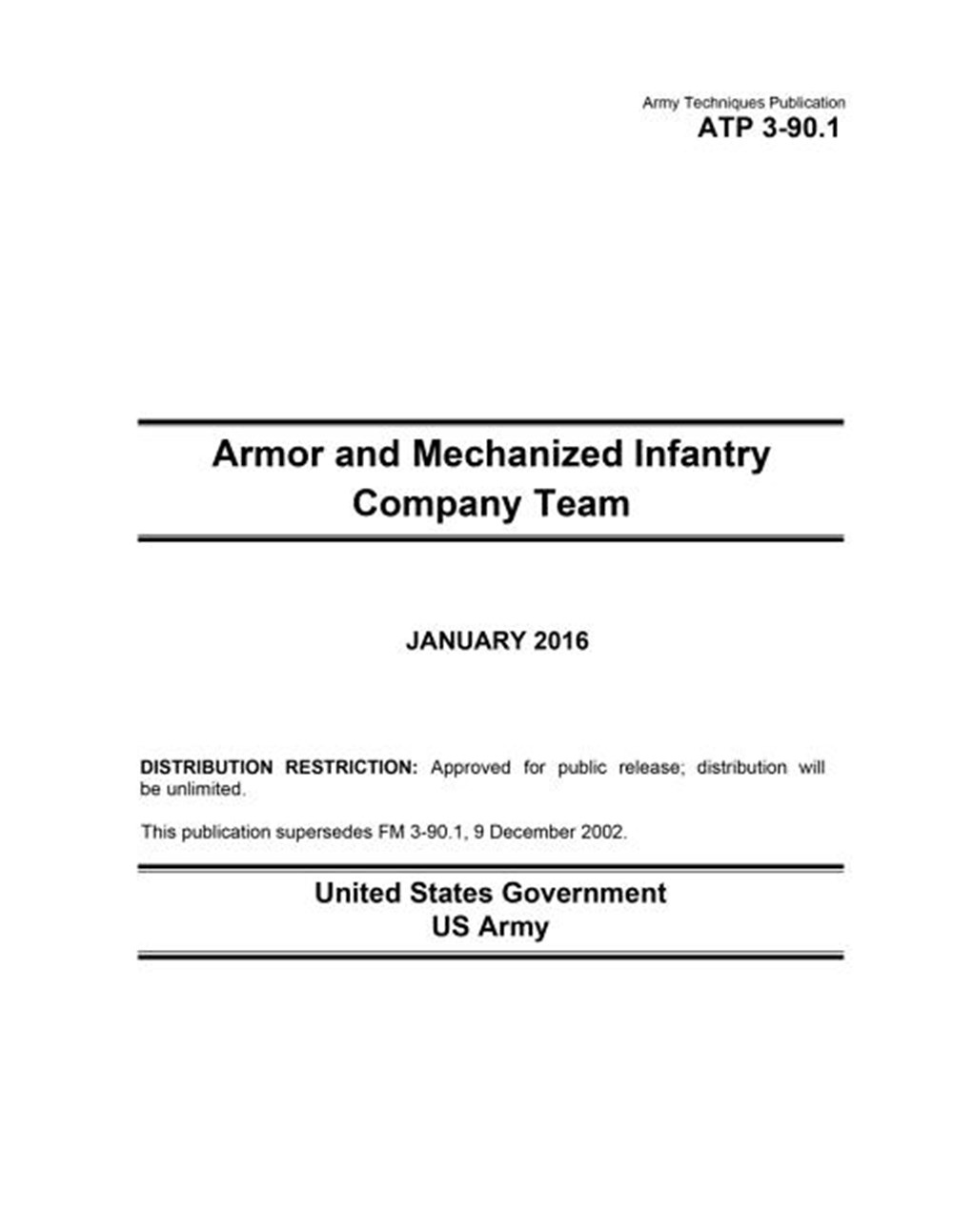
Army Techniques Publication ATP 3-90.1 Armor and Mechanized Infantry Company Team January 2016
This publication, Army Techniques Publication ATP 3-90. 1 Armor and Mechanized Infantry Company Team January 2016, provides techniques, for the employment of Armor and mechanized Infantry company teams within combined arms battalions (CABs) in the Armored brigade combat team (ABCT). It provides the framework and technical employment principles for Armor and rifle company teams within CAB in the ABCT.
| Quantity | Price | Discount |
|---|---|---|
| List Price | $14.99 |
Non-returnable discount pricing
$14.99
Book Information
| Publisher: | Createspace Independent Publishing Platform |
|---|---|
| Publish Date: | 02/15/2016 |
| Pages: | 202 |
| ISBN-13: | 9781530052318 |
| ISBN-10: | 1530052319 |
| Language: | English |
Full Description
This publication, Army Techniques Publication ATP 3-90.1 Armor and Mechanized Infantry Company Team January 2016, provides techniques, for the employment of Armor and mechanized Infantry company teams within combined arms battalions (CABs) in the Armored brigade combat team (ABCT). It provides the framework and technical employment principles for Armor and rifle company teams within CAB in the ABCT. This ATP provides doctrinal guidance for commanders, staff, and leaders who plan, prepare, execute, and assess the operations of Armor and mechanized Infantry company teams. Specifically it is directed toward the company commander, executive officer (XO), first sergeant (1SG), platoon leader (PL), platoon sergeant (PSG), fire support officer (FSO), master gunner, supply sergeant, signal support specialist, emergency care sergeant, field maintenance team (FMT) chief, and all supporting units. Commanders, staffs, and subordinates ensure their decisions and actions follow applicable United States (U.S.), international, and, in some cases, host-nation laws and regulations. Commanders at all levels ensure their Soldiers operate according to the law of war and rules of engagement (ROE). (Refer to Field Manual (FM) 27-10 for more information). This publication serves as an authoritative reference for United States Army Training and Doctrine Command personnel who develop doctrine material and force structure, institutional and unit training, and company team standard operating procedures (SOPs). It is a guide for Armor and mechanized Infantry companies to develop SOPs. ATP 3-90.1 has been updated and provided as an ATP in accordance with 2015 Doctrine Strategy. In addition to doctrine changes, a significant effort has been made to eliminate redundancies with parent doctrinal manuals (for example ADRP 3-07). The end results are a reduction of chapters, from 11 to 8. Chapter 1 discusses the role of the Armor and mechanized Infantry company team. It discusses Armor and mechanized Infantry company team operations It also combines content from previous Chapters 2 and 3 to include discussion on the operational areas, the role of the Armor and Mechanized Infantry Company Team the duties and responsibilities for key personnel and the operations process. Chapter 2 discusses basics of the offense, common offensive planning considerations, actions on contact, movement to contact (MTC), and attack. Chapters 3 discusses basics of the defense, common defensive planning considerations, defensive techniques, engagement area (EA) development, and transitions. Chapter 4 discusses company support for stability tasks, company stability tasks, common stability planning considerations, inform and military transition teams. Chapter 5 establishes techniques and procedures that the company team can apply to these specialized missions (such as, linkup, passage of lines, relief in place, battle handover, assembly area operations). Chapter 6 discusses principles of direct fire control, the fire control process, direct fire planning, and direct fire control. Chapter 7 focuses on those elements with which the company team is most likely to work: fires, aviation, protection, and intelligence. Chapter 8 discusses the provision of the logistics, personnel services, and Army health protection necessary to maintain operations until mission accomplishment.

